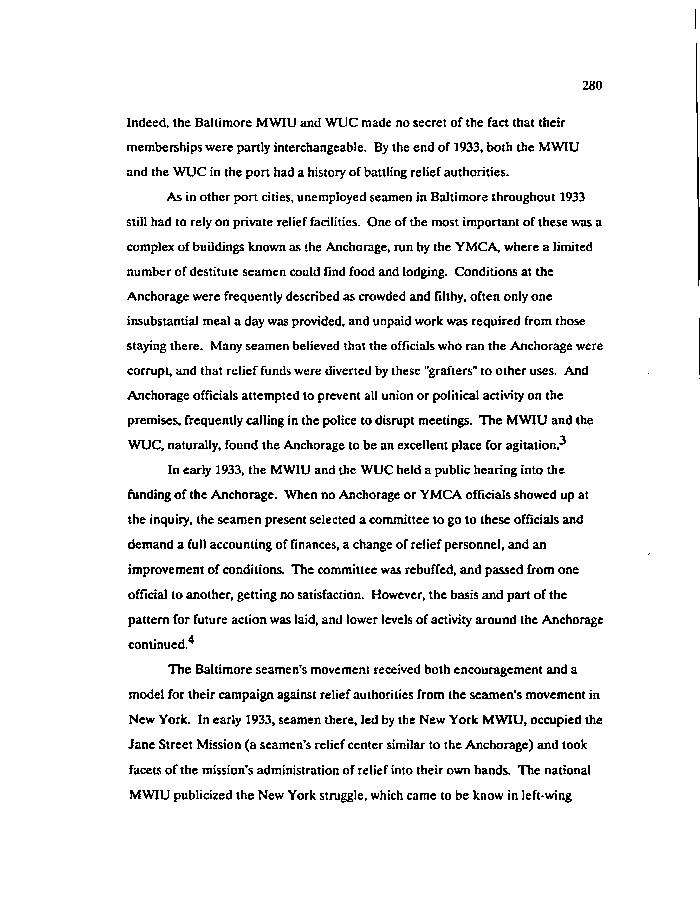|
280
Indeed, the Baltimore MWIU and WUC made no secret of the fact that their
memberships were partly interchangeable. By the end of 1933, both the MWIU
and the WUC in the port had a history of battling relief authorities.
As in other port cities, unemployed seamen in Baltimore throughout 1933
still had to rely on private relief facilities. One of the most important of these was a
complex of buildings known as the Anchorage, run by the YMCA, where a limited
number of destitute seamen could find food and lodging. Conditions at the
Anchorage were frequently described as crowded and filthy, often only one
insubstantial meal a day was provided, and unpaid work was required from those
staying there. Many seamen believed that the officials who ran the Anchorage were
corrupt, and that relief funds were diverted by these "grafters" to other uses. And
Anchorage officials attempted to prevent all union or political activity on the
premises, frequently calling in the police to disrupt meetings. The MWIU and the
WUC, naturally, found the Anchorage to be an excellent place for agitation/
In early 1933, the MWIU and the WUC held a public hearing into the
funding of the Anchorage. When no Anchorage or YMCA officials showed up at
the inquiry, the seamen present selected a committee to go to these officials and
demand a full accounting of finances, a change of relief personnel, and an
improvement of conditions. The committee was rebuffed, and passed from one
official to another, getting no satisfaction. However, the basis and part of the
pattern for future action was laid, and lower levels of activity around the Anchorage
continued.
The Baltimore seamen's movement received both encouragement and a
model for their campaign against relief authorities from the seamen's movement in
New York. In early 1933, seamen there, led by the New York MWIU, occupied the
Jane Street Mission (a seamen's relief center similar to the Anchorage) and took
facets of the mission's administration of relief into their own hands. The national
MWIU publicized the New York struggle, which came to be know in left-wing
|

